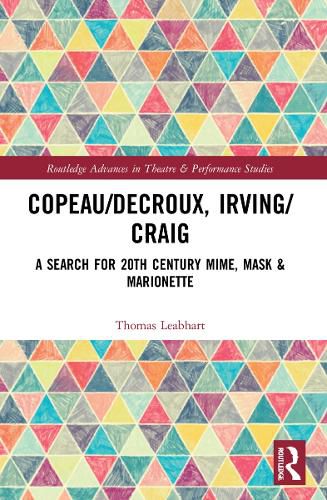Readings Newsletter
Become a Readings Member to make your shopping experience even easier.
Sign in or sign up for free!
You’re not far away from qualifying for FREE standard shipping within Australia
You’ve qualified for FREE standard shipping within Australia
The cart is loading…






In this series of essays, Thomas Leabhart presents a thorough overview and analysis of Etienne Decroux's artistic genealogy.
After four years' apprenticeship with Decroux, Thomas Leabhart began to research and discover how forebears and contemporaries might have influenced Decroux's project. Decades of digging revealed striking correspondences that often led to adjacent fields-art history, philosophy, and anthropology-forays wherein Leabhart's appreciation of Decroux and his "kinsfolk," who themselves transgressed traditional frontiers, increased. The following essays, composed over a 30-year period, find a common source in a darkened Prague cinema where people gasped at a wooden doll's sudden reversal of fortune. These essays: investigate the source of that astonishment; continue Leabhart's examination of Decroux's "family tree"; consider how Copeau's and Decroux's keen observation of animal movement influenced their actor training; record the challenging and paradoxical improvisations chez Decroux; and recall Decroux's debt to sculpture, poster art, sport and masks.
These essays will be of great interest to students, scholars and practitioners in theatre and performance studies.
$9.00 standard shipping within Australia
FREE standard shipping within Australia for orders over $100.00
Express & International shipping calculated at checkout
In this series of essays, Thomas Leabhart presents a thorough overview and analysis of Etienne Decroux's artistic genealogy.
After four years' apprenticeship with Decroux, Thomas Leabhart began to research and discover how forebears and contemporaries might have influenced Decroux's project. Decades of digging revealed striking correspondences that often led to adjacent fields-art history, philosophy, and anthropology-forays wherein Leabhart's appreciation of Decroux and his "kinsfolk," who themselves transgressed traditional frontiers, increased. The following essays, composed over a 30-year period, find a common source in a darkened Prague cinema where people gasped at a wooden doll's sudden reversal of fortune. These essays: investigate the source of that astonishment; continue Leabhart's examination of Decroux's "family tree"; consider how Copeau's and Decroux's keen observation of animal movement influenced their actor training; record the challenging and paradoxical improvisations chez Decroux; and recall Decroux's debt to sculpture, poster art, sport and masks.
These essays will be of great interest to students, scholars and practitioners in theatre and performance studies.